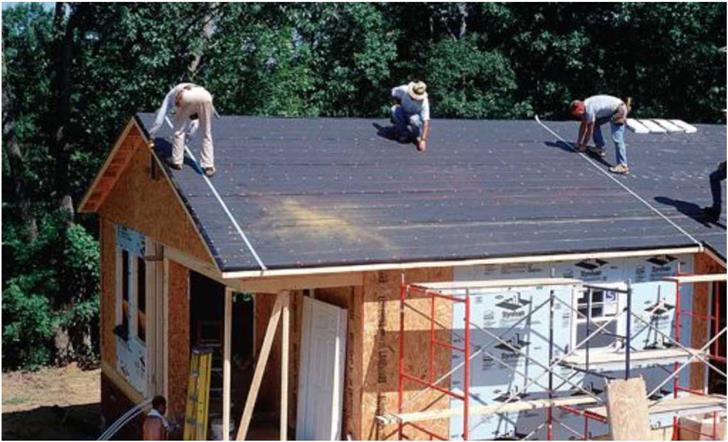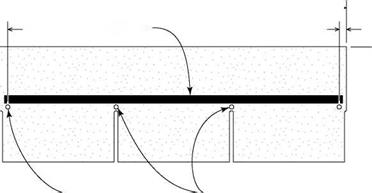ESTIMATES FOR A ROOF
Determining the quantity of materials needed to cover and shingle a roof is rather easy. First, measure the roof to determine its square footage. Add the width of both sides of the roof and multiply that number by the length of the roof. Let’s look at an example: A roof with an overall width of 28 ft. and a length of 46 ft. has a total area of 1,288 sq. ft., which I’d round up to 1,300 sq. ft.
FIGURE FELT PAPER FIRST. The first material you will need is felt paper. The coverage you can obtain from a roll of felt paper varies, but it’s often 300 sq. ft. (to make sure, ask your building-materials supplier). Divide 1,300 sq. ft. by 300 sq. ft. for a total of 4.33 or 41/3 rolls. Buy five rolls of felt paper, because you’ll need the extra to compensate for overlap and to seal around the plumbing vents.
SHINGLES COME IN BUNDLES AND ARE ORDERED BY THE SQUARE. One bundle of standard-size shingles covers 33.3 sq. ft. Three bundles cover 100 sq. ft. (10 ft. by 10 ft.), which is called a square. It takes 13 squares (39 bundles) to cover a 1,300-sq.-ft. roof. Order at least two extra bundles to make up for the ridge cap, the valley lap, and waste.
In addition to the shingles, you’ll need a ridge vent. Measure the length of the ridge to determine the size you’ll need. Depending on the manufacturer’s recommendations, vents can extend all the way across the ridge or to within 2 ft. of the roof’s edge at each end.
DON’T FORGET THE NAILS. Buy 7/s-in. roofing nails for the shingles (about 1 lb. per square) and 11/2-in. nails for the ridge vent (about У2 lb.). Buy coil nails if you are using a pneumatic nailer. If the eave overhangs will be exposed, buy 2 lb. of 5/s-in. roofing nails; longer nails that penetrate the roof sheathing are unsightly. You’ll also need about 5 lb. of plastic-head roofing nails to hold the felt paper in place on a roof this size. Add a tube or two of asphalt caulk to cover any exposed nails and to seal around the plumbing vents.
 Don’t let shingles get sunburned. Don’t store asphalt shingles in the sun, unless you’re going to use them right away. The tar strips can melt and seal the shingles together into a big, useless mess. If you must store shingles, put them in the shade or cover them with a light-colored tarp to reflect the heat.
Don’t let shingles get sunburned. Don’t store asphalt shingles in the sun, unless you’re going to use them right away. The tar strips can melt and seal the shingles together into a big, useless mess. If you must store shingles, put them in the shade or cover them with a light-colored tarp to reflect the heat.
|
|
||
|
|||
|
|||
|
|
||
|
|||
|
|||
|
|||
|
|||
|
|||








Leave a reply